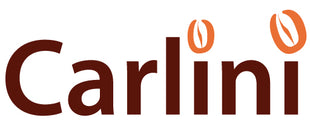The Truth About Third Wave Coffee and "Hand Roasting"
The coffee world began a significant shift around 2008, embracing what is now known as "Third Wave" coffee.
Originally, this was a trendy term used to describe a movement focused on traceability and the meticulous preparation of the bean. It represented a more involved lifecycle from crop to cup—sourcing high-grade specialty green beans, roasting them to defined profiles (often as Single Origin), and brewing them to highlight their unique character.
While the Third Wave movement did wonders for coffee quality—moving us away from dark, generic blends—it also created a marketing by-product that deserves a closer look: the rise of the "Artisan" roaster.
The Rise of the "Artisan" Roaster
A major side-effect of the Third Wave boom was an explosion in the number of small specialty roasters. Suddenly, tiny cafes and boutique shops were installing small roasters in the corner to claim their beans were "locally fresh roasted."
These small facilities often define themselves as true craftsmen of the bean. The image is familiar: a shiny little roasting machine, a "cool" aesthetic, and the claim that their coffee is "hand roasted" to perfection.
While the romance of the artisan is appealing, the reality of roasting physics is somewhat different.
Why "Hand Roasted" Doesn't Always Mean Better
There is a misconception that small, hand-roasted batches are superior to those produced by larger, technology-driven roasters.
The truth? Hand roasting is prone to human error.
It is incredibly difficult to manage consistency and quality manually because roasting requires absolute, unbroken concentration. In a busy cafe environment where people are watching or asking questions, distraction is inevitable.
Furthermore, reliance on the senses—sight, sound, and smell—is flawed when it comes to thermal dynamics.
The Problem with Roasting by Senses
Many artisan roasters rely on olfactory senses (smell) to judge a roast. While this provides interesting theater for the customer, from a physics standpoint, it means the roaster is running behind.
All roasting equipment experiences thermal lag. By the time a human smells a change or spots a deviation, the reaction is already delayed. It takes considerable time for heat to either build up or dissipate within the thermal mass of the machine. It is not instant, like turning down a gas stove in a kitchen.
If a roaster is relying on their nose to make adjustments, the roast is already out of control.
Why There Is No Substitute for Technology
At Carlini Coffee, we believe that consistency is the truest mark of quality. That is why we rely on precision technology rather than romance.
All three of our best-in-class roasting platforms have fully automated profile systems installed. We have deployed the best available technology to achieve strict quality objectives.
The Advantages of Automated Profiling
-
Reaction Speed: Computers that control the roaster to defined profiles perform faster and more reliably than humans ever can.
-
Predictive Analysis: The intelligence built into our roasting profiler uses analytical engines to manage batch duration, compensating for variables before they ruin a roast.
-
Feedback Loops: We utilize analytical systems to score roasted control samples, feeding that data back into the original recipe for continuous optimization.
We rarely hand roast anything—in fact, it makes up less than 1% of our volume, reserved only for testing new green beans or specific non-standard requests.
While the "Artisan" label is trendy, we prefer the label "Consistent." By removing the variables of human error and thermal lag, we ensure that the cup you drink today tastes just as good as the one you drank yesterday.

